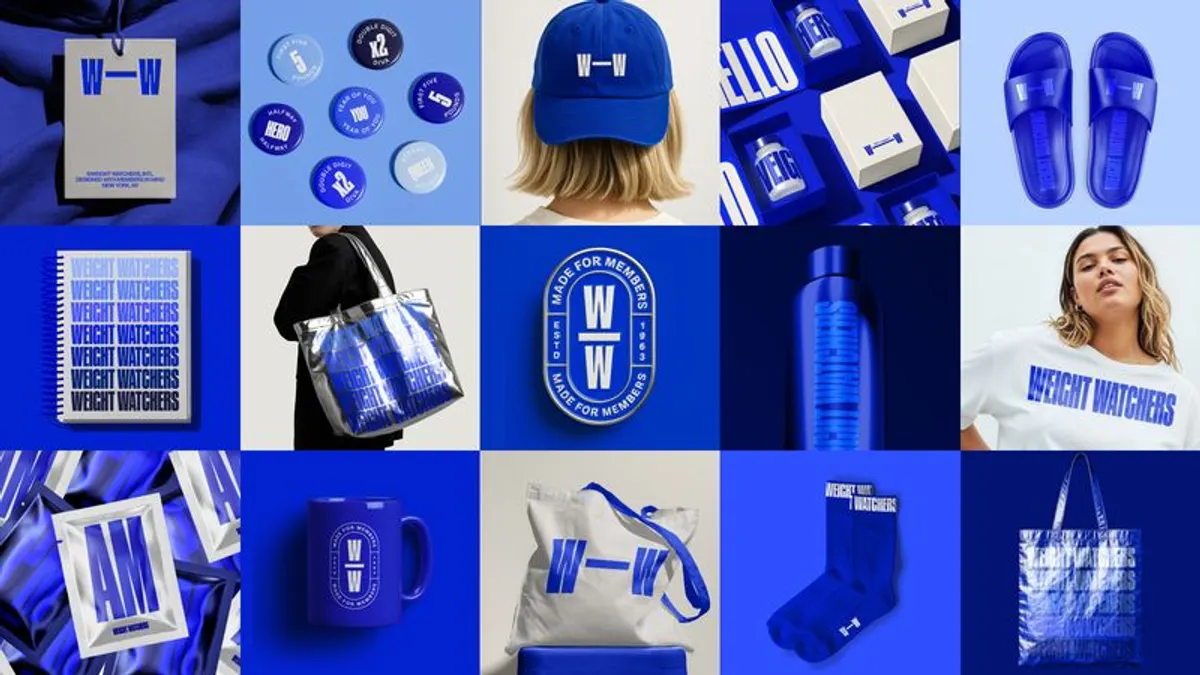NEW YORK — Retail media networks are entering either their 2.0 or 3.0 era, depending on who you asked at the National Retail Federation’s Big Show this past weekend. Numerical variance aside, experts agreed that 2024 heralds the next chapter for a fast-growing channel, though one whose path forward remains murky amid a race to standardize ad formats and measurement.
Retail media is still primed to attract heftier investments now that Google’s plan to enact the death of the cookie is in effect, hampering a bedrock digital ad-targeting method. However, speakers at the NRF confab seemed more eager to highlight the ways they’re trying to refashion old chestnuts, including in-store assets, to fortify their newfangled advertising bets than talk about the search and display offerings (or retail media 1.0) that have put the category on course to generate a $100 billion in revenue over the next several years.
Repositioning brick and mortar as a brand-building tool versus simple shopper marketing was a theme threaded throughout discussions and interviews on the show floor. Only time will tell whether consumers view it as more than a message plastered on the aisle or their shopping cart with some additional tech bells and whistles.
“It’s a channel with broadcast-level scale,” said Ryan Mayward, senior vice president of retail media sales at Walmart Connect, during a panel about how physical stores could usher in the “golden age” of retail media. Walmart Connect has recently taken its product demoing program in-house and expanded advertising on an owned and operated in-store radio network called Walmart Radio.
“One hundred and forty million customers a week shop in our stores. That’s bigger than any broadcast TV network can deliver,” Mayward continued. “I think the store, as an advertising channel, is as relevant to the shopper marketer as it is to the chief marketer.”
A Super Bowl-sized opportunity?
Other retail media networks signaled their ambitions to ramp up in-store bets at NRF, viewing it as a key piece in realizing a pitch around omnichannel capabilities and providing a full view into the customer journey. Despite the bump e-commerce received during the pandemic, about 85% of transactions still occur at brick-and-mortar locations in the U.S., per CB Insights data cited by one conference attendee. Physical retail also gives smaller networks a possible advantage over Amazon, a platform that commands the lion’s share of retail media spending but has struggled to iron out its brick-and-mortar strategy.
“[In-store] is the biggest opportunity left for retail media networks to capitalize on. Generally, it’s by far the larger conversion location,” said Evan Hovorka, head of product and innovation at Albertsons Media Collective, in an interview. “A lot of the traffic, the time spent, the impressions and the conversions are in that store center.”
7-Eleven, the largest convenience chain in the U.S. with over 13,000 locations, is also scaling up its radio ambitions this year, bringing a program currently in about 2,000 stores to the entirety of its North American network. The move will make the c-store’s radio station the largest in the country, claimed Marissa Jarratt chief marketing and sustainability officer, during an on-stage discussion.
Instacart, the grocery delivery platform, is beginning to pilot ads on its artificial intelligence-powered Caper Carts. Deli and bakery screens, electronics department TVs and cooler doors, enabled by vendors like Cooler Screens, were some of the other in-store advertising avenues championed at NRF.
“I think physical retail is the new TV because it provides so much of what linear TV is no longer able to provide, which is scale, brand safety and reaching the right audiences,” said Andrew Lipsman, an analyst at Media, Ads +Commerce, on the same panel as Walmart Connect’s Mayward. “Increasingly, it can start to fill that role that TV is leaving behind.”
While it’s been clear for some time that in-store advertising has benefits, like placing a brand message close to the point of transaction, some on the NRF show floor were more measured about the opportunity when compared against conventional brand-building tactics.
“In-store should be able to shine bright for a few things, but nothing tells a national brand story like a Super Bowl ad,” said Hovorka. “It’s just that there's less and less of those opportunities on linear.”
Easier said than done
The fast rise of retail media has pushed network owners to quickly learn the ropes of complicated programmatic ad tech, either building out that infrastructure internally or, more commonly, partnering with established third parties for scale and cost-effectiveness. A renewed emphasis on in-store formats sounds, on paper, potentially more intuitive for a crowd that has sometimes been stodgy with tech adoption, drawing on retailers’ rich history of shopper marketing.
But experts said that delivering a cohesive in-store experience will prove to be one of 2024’s biggest challenges, especially with the longer-term goal of threading the needle between digital and physical measurement and sales attribution.
“If you’re a large company like us with 2,200 stores, all with different footprints, different banners, different constraints, trying to bring a consistent look and feel to a complementary ad service is difficult,” said Albertsons’ Hovorka. “Where we’re pushing ourselves is to really tie that all into a single vision, single strategy, so we can tell an omnichannel story better to our investors to our brands.”
As in the digital realm, retailers may enlist the help of vendors with more established tech know-how to enact their visions of a better-monetized, more digital store. Indeed, NRF’s Big Show was host to plenty of vendors touting those very same capabilities in a sea of booths that stretched across the Javitz Center in Manhattan. But third-party relationships can be messy and add layers to an already complicated retail ecosystem where different players are fighting for a piece of an increasingly lucrative pie.
“A lot of vendors are coming to them now. There’s a price to that. It could be on a programmatic exchange that they don’t control,” said Matt O’Grady, Dunnhumby’s president of Americas, on the NRF show floor.
“I’m a little sympathetic to the retailers because I think they’ve been burned in the past with other in-store technologies that they probably spent a lot of money on — radio frequencies and things like that — that may not have worked out,” O’Grady added.
“You’ve got to have great creative to get somebody to stop in an aisle and watch an ad.”

Evan Hovorka
Head of product innovation, Albertsons Media Collective
Preparation for the in-store evolution is leading companies like Albertsons to invest more in sourcing, negotiations and legal given the amount of sensitive data and contract work involved in the process. The grocer earlier this month partnered with Capgemini on automation tools that serve to improve media planning, operations and content creation.
“I think what we'll look for is more localized campaign objectives, being able to target specifically within certain regions, within certain zip codes,” said Hovorka. “We’ve launched our AI and automation investment now to prepare for that in-store work later this year.”
If and when more sophisticated in-store tech is implemented, retail media networks will have other factors to consider if they want to truly transform the channel into a storytelling machine. Chief among them: Are the ads from their brand partners actually any good?
“What everybody’s got to remember about brand building, and this is not just relevant to retail, is the value of creative,” said O’Grady. “You’ve got to have great creative to get somebody to stop in an aisle and watch an ad.”






















